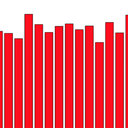Synthesis and neuroprotective effects of the complex nanoparticles of iron and sapogenin isolated from the defatted seeds of Camellia oleifera.
Avainsanat
Abstrakti
BACKGROUND
The defatted seeds of Camellia oleifera var. monosperma Hung T. Chang (Theaceae) are currently discarded without effective utilization. However, sapogenin has been isolated and shows antioxidative, anti-inflammatory and analgesic activities suggestive of its neuroprotective function.
OBJECTIVE
In order to improve the activities of sapogenin, the nanoparticles of iron-sapogenin have been synthesized, and the neuroprotective effects are evaluated.
METHODS
Structural characters of the nanoparticles were analyzed, and the antioxidant effect was assessed by DPPH method, and the neuroprotective effect was evaluated by rotenone-induced neurodegeneration in Kunming mice injected subcutaneously into the back of neck with rotenone (50 mg/kg/day) for 6 weeks and then treated by tail intravenous injection with the iron-sapogenin at the dose of 25, 50 and 100 mg/kg for 7 days. Mice behaviour and neurotransmitters were tested.
RESULTS
The product had an average size of 162 nm with spherical shape, and scavenged more than 90% DPPH radicals at 0.8 mg/mL concentration. It decreased behavioural disorder and malondialdehyde content in mice brain, and increased superoxide dismutase activity, tyrosine hydroxylase expression, dopamine and acetylcholine levels in brain in dose dependence, and their maximum changes were respectively up to 60.83%, 25.17%, 22.13%, 105.26%, 42.17% and 22.89% as compared to vehicle group. Iron-sapogenin nanoparticle shows significantly better effects than the sapogenin.
CONCLUSIONS
Iron-sapogenin alleviates neurodegeneration of mice injured by neurotoxicity of rotenone, it is a superior candidate of drugs for neuroprotection.



